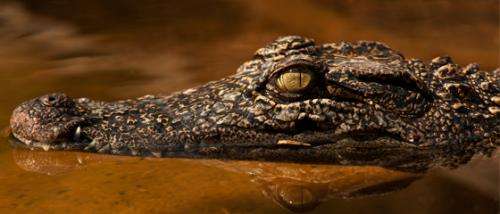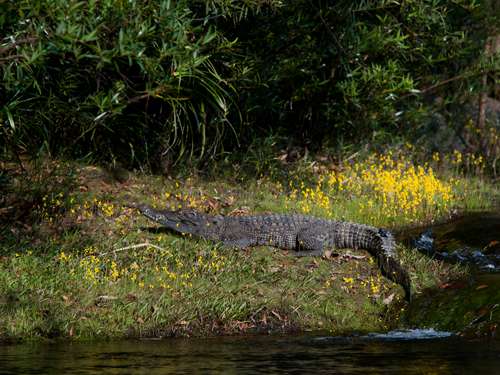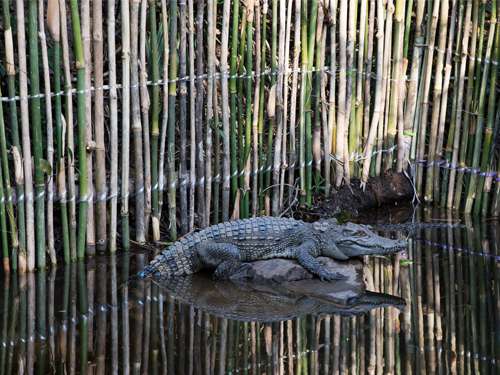Second group of endangered Siamese crocodiles released in southern Cambodia

After an idle lifetime in the soupy water of a concrete pond, a young Siamese crocodile tests out a new element – the clear flowing water of a jungle river. One of eight individuals, this croclet is part of a test case release project that plans to rewild Cambodia's rivers with this Critically Endangered species.
Fauna & Flora International (FFI) has been working to conserve Siamese crocodiles in Cambodia since rediscovering a remnant population during a survey of the Cardamom Mountains in 2000. Now numbering fewer than an estimated 300 individuals, the wild population crashed after facing multiple threats. Crocodiles were hunted for their skins, and driven out of former habitats by human encroachment; while young crocs were easily tangled and drowned in fishing nets. But for FFI's and the Forestry Administration's intervention, this species was doomed to slip into extinction.
In January this year, the Cambodian Crocodile Conservation Project (CCCP) released the second batch of crocodiles into a secret site in southern Cambodia. The first release in December 2012 saw 18 individuals released, including croclets bred in a specialised facility in Phnom Tamao Wildlife Rescue Centre. The site was specially chosen: a remote forested stretch of prime habitat – somewhere that crocodiles used to live before they were extirpated by hunters and fishermen.
A number of the release crocodiles were fitted with radio tracking devices, enabling the CCCP team to monitor their movements. "Tracking the crocs after release is an essential part of the work, allowing us to see how they are faring, whether they stay in this location, or move on," said Sarah Brook, FFI Cambodia's Species Programme Manager.

"Five of the original ten transmitters we placed on the crocodiles have now outlived their battery life," says Sam Han, CCCP Manager, who leads the team that monitor the radio tagged animals. "We are still picking up signals from three of the remaining transmitters, and regularly see other crocs that weren't tagged. They have moved up and down stream, but return to the original release site and seem to be doing well."
Community wardens now visit the location each month to ensure that hunting or fishing doesn't threaten these new colonists. So far there have been no recorded casualties.

"This project is really a test case to see if the release initiative works," said Sarah. If it does, we eventually plan to release crocodiles into suitable, well-protected river systems across Cambodia, and truly bring this species back from the brink.
"This will be a long-term prospect, and will require cooperation from zoos and breeders around the world. But if we are successful, we could see the return of one of Cambodia's most charismatic species – an important part of both Cambodia's ecosystems and its culture."
Provided by Fauna & Flora International





















